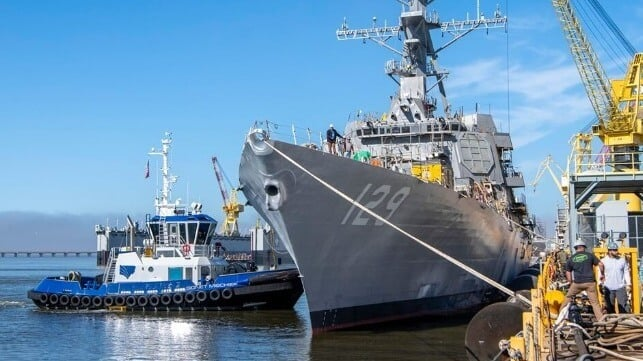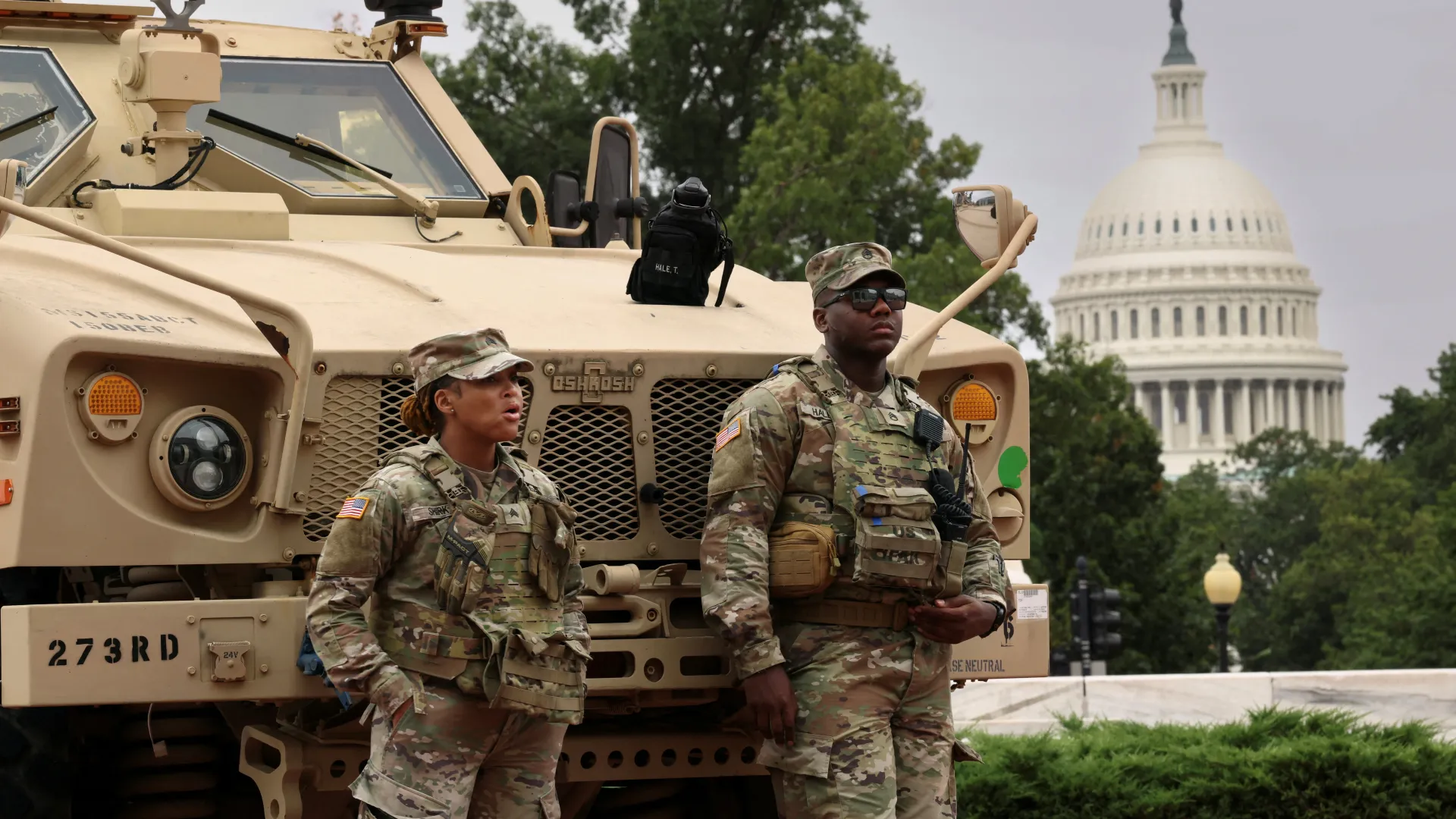- The Incident: What We Know So Far
- Mississippi Navy Shipyard: A Strategic Facility
- Eyewitness Accounts: Panic and Fear
- Investigating the Motive
- Gun Violence in the Workplace: A Broader Problem
- Community Reaction: Shock and Mourning
- National Security Concerns
- Calls for Change
- Economic Impact
- 10 Key Takeaways from the Mississippi Navy Shipyard Shooting
- FAQs
- Where did the Mississippi Navy shipyard shooting occur?
- How many people were killed in the shooting?
- Was the shooter identified?
- What is the role of the Mississippi shipyard in U.S. defense?
- How has the community responded?
- Could this incident impact Navy operations?
- What measures are being taken to prevent future incidents?
- How common are workplace shootings in the U.S.?
- What reforms are being discussed?
- What is the broader significance of this tragedy?
- Conclusion
A tragic shooting at a Mississippi Navy shipyard has left one person dead, sending shockwaves through the local community and sparking a broader conversation about workplace safety and security at U.S. naval facilities. The incident, which unfolded suddenly, not only disrupted operations but also raised serious questions about how such violence could erupt in one of the most secure industrial-military environments in the country.
For a state like Mississippi—where shipbuilding and naval facilities represent a cornerstone of both local employment and national defense—the shooting is more than a singular crime. It reflects wider issues of workplace conflict, gun violence in America, and the vulnerabilities that persist even in critical defense-related industries.
This article dives deep into the shooting, reconstructs the events as reported, explores eyewitness accounts, looks at the role of the shipyard in national security, and examines what the tragedy means for the local community, the Navy, and broader U.S. security policy.
The Incident: What We Know So Far
On a routine workday, chaos broke out at the Mississippi Navy shipyard when shots rang out inside the facility. By the time emergency responders arrived, one person was confirmed dead. Authorities quickly secured the area, but the violence had already left workers traumatized and families in grief.
Local law enforcement worked closely with military police to investigate the shooting. Early reports suggested the shooter was either a worker at the facility or had close ties to someone inside. While the motive remains unclear, the fact that it occurred within a Navy shipyard—home to highly restricted operations—made the event all the more alarming.
Mississippi Navy Shipyard: A Strategic Facility
The shipyard where the shooting occurred is not just any industrial plant—it is a critical node in America’s naval defense network. Mississippi is home to one of the largest Navy shipbuilding facilities in the country, responsible for constructing and maintaining vessels that patrol the world’s oceans.
The facility employs thousands of skilled workers, from engineers to welders, and its economic importance cannot be overstated. Families across the Gulf Coast depend on these jobs, while the U.S. Navy relies on the facility to meet its growing security needs.
That such a secure location could be the site of gun violence is startling and raises questions about how workplace disputes, mental health challenges, or external threats can penetrate even high-security zones.
Eyewitness Accounts: Panic and Fear
Witnesses described scenes of chaos and disbelief. One shipyard worker recalled hearing “what sounded like metal crashing, but then realizing it was gunfire.” Another employee described running for cover as alarms went off, while supervisors rushed to escort workers to safer areas.
Many workers were left shaken, some breaking down in tears as they recalled how a normal workday turned into a nightmare. “We never thought something like this could happen here,” said one employee. “It’s a place we come to every day, to build ships for our Navy. It’s supposed to be safe.”
Investigating the Motive
As law enforcement officials pieced together what happened, attention turned to the shooter’s motive. Was it a workplace conflict gone too far? A personal grievance? Or was there a larger security threat?
According to early speculation, the shooting may have been triggered by a personal dispute that escalated violently. However, officials have been cautious, stating that all possibilities remain under review.
The fact that a firearm made its way into the shipyard also raises questions about security checks. While employees often undergo background screenings, daily checks for weapons may not be as strict as in other federal facilities.
Gun Violence in the Workplace: A Broader Problem
The Mississippi Navy shipyard shooting is part of a troubling pattern. According to the U.S. Bureau of Labor Statistics, workplace homicides claimed more than 400 lives in 2022, with shootings making up the majority.
In high-stress industries, particularly those tied to defense and manufacturing, tensions can sometimes flare into violence. Experts note that workplace shootings often stem from unresolved conflicts, mental health struggles, or failures in early intervention.
“Every time an incident like this happens, it forces us to look at both workplace culture and security measures,” said a workplace safety analyst. “The goal should be to identify red flags before they escalate into tragedy.”
Community Reaction: Shock and Mourning
The local Mississippi community has been left reeling. Many residents have family members employed at the shipyard, and news of the shooting sparked immediate concern and grief. Churches held prayer vigils, local officials expressed condolences, and grief counselors were deployed to assist workers and families.
“This is not just a workplace. It’s a lifeline for our community,” said one city official. “When violence strikes here, it strikes at the very heart of who we are.”
The emotional toll is immense. Families are mourning the loss of a loved one while also grappling with the fear that such violence could happen again.
National Security Concerns
While the incident appears to be domestic in nature, any violence at a military-affiliated facility raises concerns about national security. Analysts point out that even if the motive was personal, the breach of security protocols sets a troubling precedent.
Shipyards are critical hubs for naval readiness. Any disruption—whether caused by accidents, strikes, or violence—can delay shipbuilding schedules and weaken defense capabilities.
The Navy has already announced a review of security measures at shipyards nationwide to ensure that weapons cannot be smuggled inside and that emergency response systems are up to standard.
Calls for Change
Following the shooting, there has been a renewed call for stronger workplace safety policies. Advocates are urging the Navy and contractors to invest in better conflict resolution programs, mental health support, and tighter security screenings.
Some lawmakers have also seized on the tragedy to push for broader gun safety measures. “We cannot continue to treat workplace shootings as isolated incidents,” said one senator. “They are part of a national epidemic that demands urgent action.”
Economic Impact
Beyond the immediate human toll, the shooting could have ripple effects on Mississippi’s economy. Any disruptions at the shipyard threaten not only production schedules but also the stability of local jobs. Workers may feel less secure returning to work, and recruitment for skilled labor could become more difficult if the perception of safety is damaged.
For a region where shipbuilding is a primary economic driver, maintaining confidence in the facility’s safety is crucial.
10 Key Takeaways from the Mississippi Navy Shipyard Shooting
- One person died in the shooting, leaving families and coworkers in grief.
- The incident took place at a critical naval facility responsible for shipbuilding and national defense.
- Eyewitnesses reported chaos and fear, with alarms sounding and workers scrambling for safety.
- The motive remains under investigation, though early reports point to a possible workplace dispute.
- Gun access inside the facility has raised serious questions about security protocols.
- Workplace shootings are a broader trend, with over 400 such homicides recorded annually in the U.S.
- The local community is mourning deeply, with prayer vigils and counseling services underway.
- National security concerns are at play, given the shipyard’s role in Navy operations.
- Lawmakers and advocates are pushing for reforms, from gun safety measures to stronger workplace protections.
Economic consequences may follow, as confidence in the facility’s safety becomes an urgent priority.
FAQs
Where did the Mississippi Navy shipyard shooting occur?
It occurred at a naval shipbuilding facility in Mississippi, one of the largest in the U.S. and a critical hub for naval defense.
How many people were killed in the shooting?
One person was confirmed dead following the incident.
Was the shooter identified?
Authorities have not yet released the identity of the shooter pending investigation.
What is the role of the Mississippi shipyard in U.S. defense?
The facility builds and maintains Navy ships, making it vital for national security and military readiness.
How has the community responded?
The community has held vigils, offered prayers, and provided counseling support for families and workers affected.
Could this incident impact Navy operations?
Yes, even short-term disruptions at the shipyard can delay shipbuilding schedules and affect naval readiness.
What measures are being taken to prevent future incidents?
The Navy has launched a review of security procedures and workplace safety policies across shipyards.
How common are workplace shootings in the U.S.?
According to federal statistics, more than 400 workplace homicides occur annually, with the majority involving firearms.
What reforms are being discussed?
Proposals include stronger workplace security, improved conflict resolution programs, mental health resources, and broader gun safety legislation.
What is the broader significance of this tragedy?
It highlights the urgent need to address workplace safety, gun violence, and national security vulnerabilities in sensitive industries.
Conclusion
The shooting at the Mississippi Navy shipyard is a tragedy that resonates far beyond the immediate crime scene. It represents a failure of security, a symptom of America’s ongoing gun violence crisis, and a painful blow to a community whose identity and livelihood are tied to shipbuilding and naval service.
While the investigation continues, one fact is clear: this tragedy must spark change. Whether through improved workplace safety policies, stricter security protocols, or national reforms on gun access, the lessons learned here could prevent future bloodshed. For now, Mississippi mourns, and the Navy faces a difficult task of rebuilding trust—not only in the safety of its shipyards but in its ability to protect the very workers who keep America’s fleet afloat.













